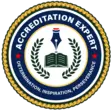- Home
- About AEC
- Our Services
Accreditatio
Accreditatio 2
Accreditatio 3
- Accreditation
- Risk Management
- Podcast
- Articles
- Resources
- Contact Us
- Home
- About Us
- Our Services
- Accreditation Approval
- All State Approval
- State Authorization BPPE
- Accreditation Compliance & Post-Survey Corrective Action
- Accreditation-Bureau Site Visit
- Board Governance
- Strategic Planning in Higher Education
- Continuing and Higher Education Accreditation
- Accreditation process
- Self Evaluation (Self-Study)
- Curriculum Development
- Veterans Approval G.I-bill
- I-Train Approval
- International Student (SEVP)
- Equal Canada Accreditation
- Accreditation
- Risk Management
- Podcast
- Articles
- Resources
- Contact Us
Strategic Planning and Environmental Scanning in Higher Education
Strategic Planning and Environmental Scanning Higher education institutions are increasingly challenged to excel in strategic planning and environmental scanning.
Many colleges and universities easily find themselves derailed in today’s dynamic and rapidly evolving landscape, and they need to catch up. Despite striving to maintain the forefront of knowledge, the advent of new technologies can quickly render their efforts obsolete. However, by adopting a proactive approach and regularly updating their strategic plans, institutions can stay ahead of these changes and ensure their efforts remain relevant.

Here is highlighting the benefits of strategic planning:
Uphold high standards of academic excellence and performance.
Preserve the institution's financial health.
Promote a culture of results and continuous improvement throughout the institution.
Develop a shared vision of institutional excellence campus-wide.
Define the institutional direction and key policies while ensuring alignment with the institution's mission.
Establish a culture of assessment and data- driven decision-making to keep programs relevant.
Maintain the highest levels of integrity and uphold an excellent institutional reputation.
Stay in good standing with accrediting bodies and qualify for Title IV funding.

Initial Accreditation Services
If you're new to state approval, start with our initial questionnaire. This provides a comprehensive understanding of your organization's readiness for state approval. FREE Initial Accreditation Assessment Questionnaire

Reaccreditiation (reaffirmation) Services
Our goal is to help you achieve successful approval from your state and ensure the process is as efficient and stress-free as possible for you and your team. FREE (Reaffirmation) Assessment Questionnaire
Understanding Environmental Scanning in Education
A critical component of strategic planning is environmental scanning. Dr. Molly Linda Poole, in her work with K-12 schools, identifies four key reasons to prioritize environmental scanning in strategic planning:
- Anticipatory Focus: Unlike traditional data gathering that describes current states, environmental scanning emphasizes forecasting future conditions across various domains.
- Broad Scope: This process extends beyond conventional data collection by considering various social, economic, political, and technological indicators that could significantly impact an organization.
- Interactive Analysis: It allows for examining the interplay between events and trends.
Ongoing Relevance: Environmental scanning is a continual process integrating information on external trends and events throughout the strategic planning cycle. To conduct environmental scanning in higher education, follow these 10 steps:
- Define the Scope and Objectives:
- Identify Purpose: Determine the purpose of the environmental scan and how it will support strategic planning.
- Set Objectives: Clearly define what you aim to achieve with the environmental scan, such as identifying opportunities, threats, or trends that impact the institution.
- Assemble a Cross-Functional Team:
- Select Team Members: Choose individuals from different departments and levels within the institution who can provide diverse perspectives.
- Assign Roles: Clearly define roles and responsibilities for each team member involved in the scanning process.
- Identify Key Areas of Focus:
Categories: Determine the specific areas to scan, such as Political, Economic, Social, Technological, Environmental, and Legal (PESTEL).
Prioritize Areas: Prioritize the areas based on their potential impact on the institution.
- Gather Information:
Data Sources: Identify and utilize various sources, including academic journals, industry reports, government publications, news outlets, and expert interviews. These sources provide reliable and diverse Information for a comprehensive environmental scan.
Methods: Different methods are used to collect data, such as surveys, focus groups, and literature reviews.
- Analyze the Data:
- Data Organization: Organize the collected data into relevant categories.
- Trend Analysis: Look for patterns, trends, and relationships in the data.
- SWOT Analysis: Conduct a SWOT (Strengths, Weaknesses, Opportunities, and Threats) analysis to evaluate the institution's position about the identified trends. This involves identifying internal strengths, weaknesses, and external opportunities and threats and assessing how these factors may impact the institution's strategic planning.
- Interpret Findings:
- Contextualize Data: Place the findings within the context of the institution's goals and strategic priorities.
- Implications: Identify the potential implications of the findings for the institution.
- Communicate Results:
- Reports: Prepare comprehensive reports summarizing the findings and their implications.
- Presentations: Present the findings to key stakeholders, including senior leadership, faculty, and staff.
- Integrate Into Strategic Planning:
- Action Plans: Develop action plans to address identified opportunities and threats based on the findings.
- Decision-Making: Use the environmental scan to inform decision-making and strategic planning processes.
- Monitor and Review:
- Continuous Monitoring: Establish a process for continuous monitoring of the external environment to keep the strategic plan current.
- Periodic Reviews: Schedule regular reviews to update the environmental scan and adjust strategies as needed.
- Documentation: Keep detailed records of the scanning process, findings, and decisions.
- Reflect: Periodically reflect on the process to identify improvements for future environmental scans.
This will ensure that your strategic planning remains relevant and practical.
Here is an overview of the SKEPTIC components and their application in higher education:
There are multiple methods available for environmental scanning. For instance, many use SWOT analysis to assess Strengths, Weaknesses, Opportunities, and Threats, focusing on the current state of an organization. However, for a complex organization like a higher education institution planning over a 5-10-year span, SWOT may not suffice.
Another popular tool is PESTLE (Political, Economic, Social, Technological, Legal, and Environmental), which helps analyze external trends but may overlook the organization’s capacity to act on these insights.
We at Accreditation Expert Consulting employ the SKEPTIC Environmental Scanning Model, a comprehensive framework that provides a holistic perspective on future environmental factors. This model has been proven effective in various industries, including higher education.
- S (Socio-demographics): Addresses demographic trends affecting student and employee demographics, which are critical in declining enrollments.
- K (Competition): Considers various forms of competition, from local educational institutions to online platforms offering complimentary or alternative credentials.
- E (Environment and Economics): examines local and international economic conditions that affect student demographics and institutional funding.
- P (Political and Regulatory): Evaluates the political landscape and regulatory environment impacting higher education policies and funding.
- T (Technology): Considers ongoing technological advancements and their implications for strategic planning. Technology is crucial in strategic planning and environmental scanning in today's digital age. From data analytics tools that can help identify trends and patterns to communication platforms that facilitate stakeholder engagement, technology can significantly enhance the effectiveness and efficiency of these processes.
- I (Industry): Reviews the current and future needs of the industries that the educational programs aim to serve.
- C (Customers): Identifies the primary stakeholders of higher education institutions, including students, parents, and future employers, and their evolving expectations.
The Importance of Engaging Stakeholders in Environmental Scanning
Environmental scanning is a process that gathers information and engages various institutional stakeholders, including administrators, faculty, students, alumni, industry leaders, and donors. This inclusive engagement educates stakeholders about higher education’s challenges and makes them feel valued and integral to the shared vision crucial for successful strategic planning. This emphasis on inclusivity should make stakeholders feel valued and integral to the process, fostering a sense of belonging and importance.
While time-consuming, environmental scanning offers a deep dive into an institution’s challenges, fostering a community spirit among stakeholders. If effectively conducted, this process can act as a catalyst for achieving the strategic goals outlined in the plan, giving the audience confidence in its effectiveness. This emphasis on fostering a community spirit should make stakeholders feel connected and part of a larger mission, enhancing their sense of belonging and commitment.
State Approval Readines
If you're new to state approval, start with our initial questionnaire. This provides a comprehensive understanding of your organization's readiness for state approval.
Our goal is to help you achieve successful approval from your state and ensure the process is as efficient and stress-free as possible for you and your team.
“Accreditation Expert Consulting Team”
Request call back
Our goal is to help you find exactly what you need and explore your options.












